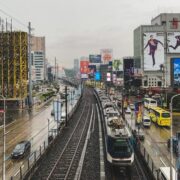
GLOBAL investment banking giant Goldman Sachs has laid out a promising economic outlook for the Philippines next year.
In their November report entitled “ASEAN 2021 Outlook: Vaccine Critical to Regional Recovery,” Goldman Sachs economists Andrew Tilton, Danny Suwanapruti, and Jonathan Sequeira said they expect growth to “rebound the most in the Philippines (9.4%) and Malaysia (6.6%), which were among the hardest hit by virus containment this year.”
“We’re optimistic about growth in Asia-Pacific next year,” said Tilton.
“We think the region could grow more than 7% in 2021. We’re optimistic about the world also – we think the world can grow about 6% — but especially optimistic about Asia-Pacific,” he added.
On the other hand, the banking giant forecasted the country’s gross domestic product (GDP) this year to post the biggest contraction in the Association of Southeast Asian Nations (ASEAN) at 8.5%. This is followed by Malaysia at 6.5%, Thailand at 6.3%, Singapore at 5.8%, and Indonesia at 1.8%.
Goldman Sachs attributed its 2020 GDP projection for the Philippines to its national lockdown as well as its limited success with domestic virus containment.
As for its 2021 forecast, the banking giant said it relied on the country’s response to the pandemic and vaccine rollout.
“Given the extended demand contraction and limited fiscal offset to private sector balance sheets, we also build in larger permanent output losses going forward,” said Goldman Sachs.
“However, with virus spread now slowing domestically, some relaxation in containment policies is likely — and this combined with the deployment of an effective vaccine next year could see a meaningful normalization in service sector activity in the second half of 2021,” it added.
Goldman Sachs also noted that the Philippine government is eyeing to normalize capital expenditure (capex) spending under President Rodrigo Duterte’s centerpiece “Build, Build, Build” (BBB) Program” next year.
“Program expenditures are expected to contract 6% this year as the government prioritized social and health-care spending. However, we expect capex spending to rise to 5.6% of GDP in 2021 with the government budgeting a 40% increase in capex spending in 2021,” it said.
“Compared to previous years, when the government relied entirely on its budget to finance infrastructure spending, there will also be higher private participation — with around 30% of ‘Build, Build, Build’ projects now expected to be financed by the private sector,” Goldman Sachs added.





